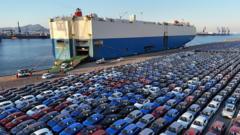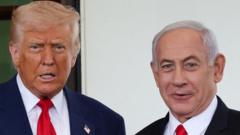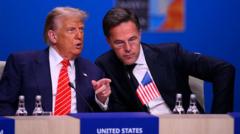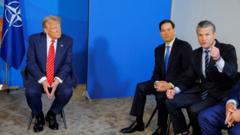Businesses and governments brace for economic shifts as the specifics of Trump's "Liberation Day" tariffs remain unclear.
**Trump's Upcoming 'Liberation Day' Tariffs: Key Uncertainties Unveiled**

**Trump's Upcoming 'Liberation Day' Tariffs: Key Uncertainties Unveiled**
As tensions mount, US President Donald Trump is set to announce new tariffs, with widespread implications for international trade.
Donald Trump has consistently signaled the implementation of new tariffs, but the details surrounding them are still largely ambiguous. Following multiple increases in import taxes since taking office, including levies on Chinese goods, steel, and aluminum, attention now turns to an anticipated announcement dubbed "Liberation Day." This week, Trump intends to unveil a broader tariff plan that his administration has been developing, prompting questions about the magnitude and reach of these new duties.
A focal point of speculation revolves around the potential rates for the tariffs. Though the White House has yet to publicly disclose specific figures, analysts suggest various possibilities based on Trump's previous comments. During his campaign, he proposed tariffs of anywhere between 10% to 60% on imports, particularly singling out Chinese goods. Recently, he emphasized a reciprocal approach—if a country imposes tariffs on the US, the US would respond in kind. The situation is complicated further by the fact that proposed tariffs may not simply reflect tax rates but could also account for perceived unfair practices like Value Added Taxes employed by other nations.
Countries across the globe are bracing for potential repercussions. While it is unclear how universally these tariffs may apply, Trump alluded to the possibility of targeting a wide range of nations, which has dashed hopes for exemptions among certain allies, including the UK. Notably, discussions have hinted at focusing on a select group of "Dirty 15" countries, those which impose the bulk of restrictive trade measures against American enterprises.
The implications of these tariffs extend beyond mere import taxes. While formally the burden falls on US firms importing the goods, businesses are likely to seek methods to mitigate increased costs. Strategies may include altering supply chains, negotiating with partners, or passing costs onto consumers, all of which introduce the risk of reduced sales. As companies weigh these decisions, the ramifications could echo through the US economy and affect global market dynamics, especially as other nations may respond in kind with tariffs of their own.
In the complex landscape of international trade under Trump's leadership, the forthcoming announcement could mark a significant turning point, raising concerns about recessionary pressures not only in the US but beyond, leaving economists and businesses alike anxious about the potential fallout.





















